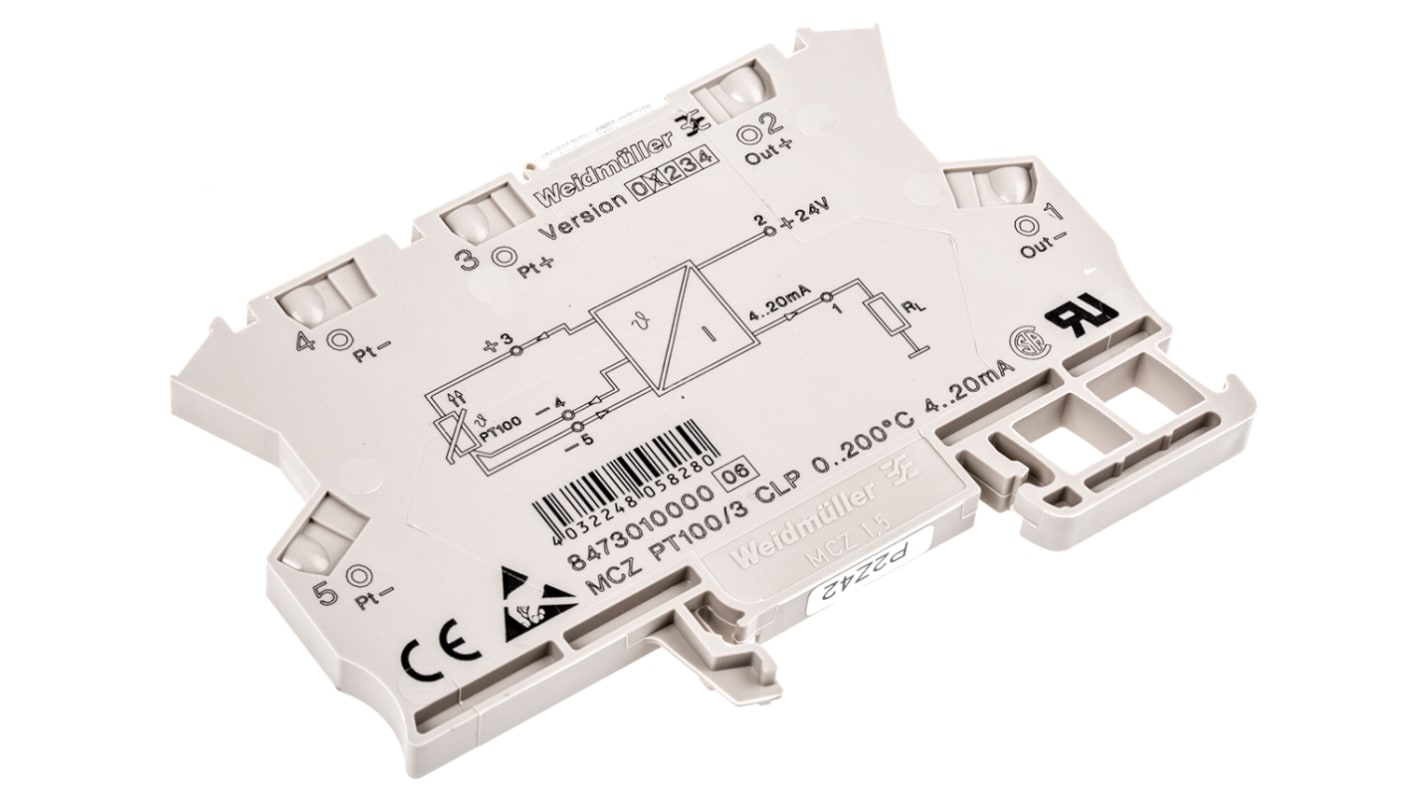Weidmuller ACT20X Series Signal Conditioner, RTD Input, Current Output, 9 → 30V dc Supply
- RS Stock No.:
- 393-0184
- Distrelec Article No.:
- 303-74-064
- Mfr. Part No.:
- 8473010000
- Brand:
- Weidmüller

Subtotal (1 unit)*
£70.32
(exc. VAT)
£84.38
(inc. VAT)
FREE delivery for orders over £50.00
In Stock
- 40 unit(s) ready to ship
- Plus 3 unit(s) ready to ship from another location
- Plus 80 unit(s) shipping from 27 October 2025
Need more? Click ‘Check delivery dates’ to find extra stock and lead times.
Units | Per unit |
|---|---|
| 1 + | £70.32 |
*price indicative
- RS Stock No.:
- 393-0184
- Distrelec Article No.:
- 303-74-064
- Mfr. Part No.:
- 8473010000
- Brand:
- Weidmüller
Specifications
Technical Reference
Legislation and Compliance
Product Details
Find similar products by selecting one or more attributes.
Select all | Attribute | Value |
|---|---|---|
| Brand | Weidmüller | |
| Module Type | Temperature Converter | |
| Input Signal Type | RTD | |
| Output Signal Type | Current | |
| Input Range | 0 → 200°C | |
| Output Range | 4 → 20mA | |
| Supply Voltage | 9 → 30V dc | |
| Mounting Type | DIN Rail Mount | |
| Operating Temperature Range | 0 → +50°C | |
| Series | ACT20X | |
| Minimum Operating Temperature | -25°C | |
| Maximum Operating Temperature | +50°C | |
| Termination | Plug-In | |
| Standards Met | CE, EAC | |
Select all | ||
|---|---|---|
Brand Weidmüller | ||
Module Type Temperature Converter | ||
Input Signal Type RTD | ||
Output Signal Type Current | ||
Input Range 0 → 200°C | ||
Output Range 4 → 20mA | ||
Supply Voltage 9 → 30V dc | ||
Mounting Type DIN Rail Mount | ||
Operating Temperature Range 0 → +50°C | ||
Series ACT20X | ||
Minimum Operating Temperature -25°C | ||
Maximum Operating Temperature +50°C | ||
Termination Plug-In | ||
Standards Met CE, EAC | ||
- COO (Country of Origin):
- RO
Weidmuller Signal Conditioner, Temperature Converter, 0°C to +200°C Input Temperature Range - ACT20X Series - 8473010000
Keep your signals in top form with this signal conditioner from Weidmuller. It allows you to convert a temperature reading from a PT100-type RTD sensor into a current output signal that your equipment can use. The module is easy to install, as it uses a simple tension clamp connection and clips onto a DIN rail. Thanks to a wide temperature input range between 0°C and +200°C, you can use this module in demanding applications.
Features & Benefits
• Compatible with two and three-wire PT100 sensors for versatility
• Accepts wire sizes between 22 and 12AWG for broad compatibility
• Supply voltage range between 9 and 30V DC for use in low-power systems
• Accepts wire sizes between 22 and 12AWG for broad compatibility
• Supply voltage range between 9 and 30V DC for use in low-power systems
Applications
• Factory automation
• Energy production
• Transportation sector
• Energy production
• Transportation sector
How does an RTD temperature sensor work?
RTD sensors contain a strip of metal. The metal's resistance increases as its temperature increases. When electricity passes through the sensor, it measures the level of resistance to the current, converting it to a temperature reading based on the properties of the element used.
